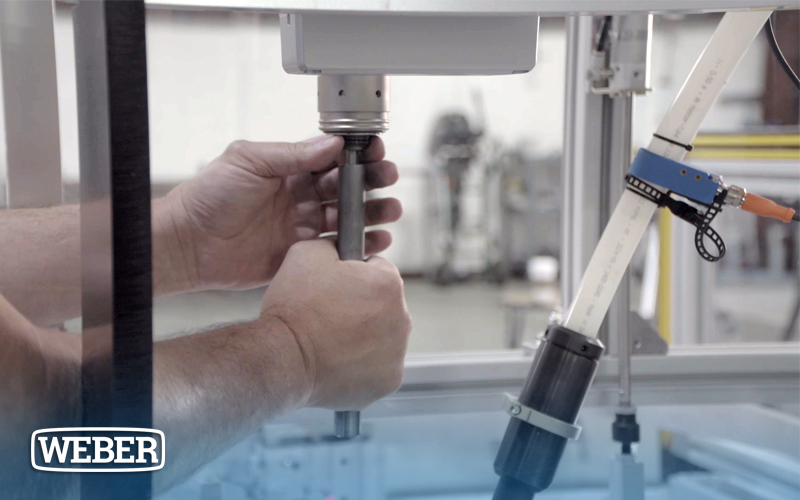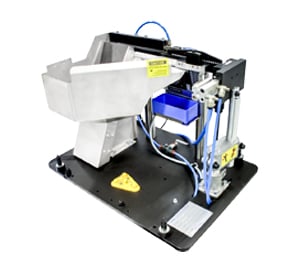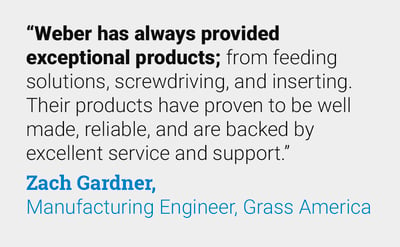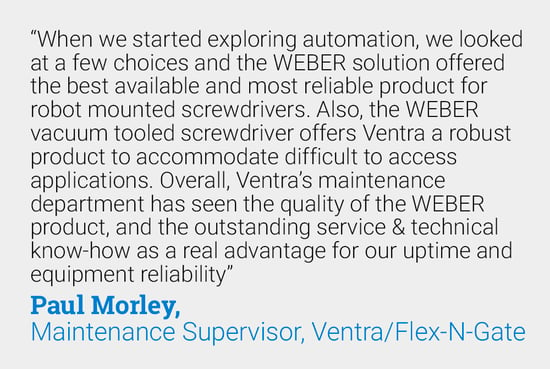2 min read
Fixture Screwdriving Systems Designed for Speed and Service
By: Michael Rabasco Oct 16, 2025 11:15:01 AM

High-volume assembly puts equipment to the test. Every joint must be accurate, every changeover quick, and every interruption minimal. WEBER's fixtured screwdriving systems are built around that reality.
Built for Demanding Assembly
 Assembly lines demand consistency. Fixtured screwdriving systems meet that need by anchoring the fastening process to a stable platform. Mounted on workstations or robotic arms, they are built for cycle times with little margin for error. WEBER designs these systems to adapt to the job. Stroke lengths, drive options, and sensor packages make the same spindle suitable for many applications. When components sit deep in a housing or at an awkward angle, vacuum-equipped models drive the screw directly into place. This modular approach lets plants configure systems for current tasks while keeping flexibility for future products.
Assembly lines demand consistency. Fixtured screwdriving systems meet that need by anchoring the fastening process to a stable platform. Mounted on workstations or robotic arms, they are built for cycle times with little margin for error. WEBER designs these systems to adapt to the job. Stroke lengths, drive options, and sensor packages make the same spindle suitable for many applications. When components sit deep in a housing or at an awkward angle, vacuum-equipped models drive the screw directly into place. This modular approach lets plants configure systems for current tasks while keeping flexibility for future products.
Precision with Analog Depth Sensing
Torque alone doesn’t show the full picture of a fastening. A screw can tighten at the right torque but stop short of seating flush. To catch those cases, WEBER integrates an analog depth sensor into the spindle. It tracks the bit position in real time and records how far the screw travels. If it seizes early or never reaches full depth, the system flags it immediately. Automotive and medical production especially benefit, since depth monitoring stops faulty fastenings at the source and reduces downstream quality issues.
Quick Bit Change in Seconds
Maintenance is part of every assembly line, but it shouldn’t dictate the pace of production. WEBER designed the fixtured spindle for quick bit replacement. The process takes less than 30 seconds. An operator pulls down a release ring to remove the head and, if needed, pinches two levers to slide out the feed tube for clearance. The bit drops out and a new one goes in. Reassembly follows the same steps in reverse. The system locks back into place without tools, so production can restart quickly. By cutting this common task to a half-minute job, WEBER reduces downtime and keeps throughput steady.
Configurations for Every Line
WEBER’s fixtured systems come in several formats. The SER and SEB models cover standard applications, with the SEB adding a head stroke for assemblies needing extra control. For parts set deep inside housings, SEV spindles use vacuum transfer to reach the fastening point. Extended SEV-E models handle tasks in narrow or obstructed spaces. Lightweight robot versions integrate easily with automated cells, while nut-driving systems handle DIN-compliant fasteners and screws that other tools struggle to hold. Each option is designed for quick setup and straightforward service, keeping production on schedule.
More Output, Less Downtime
Every second matters in assembly. Cutting bit changes from minutes to seconds adds capacity across a shift. Detecting incomplete fastenings before they leave the station reduces rework and waste. Modular construction shortens setup and changeover. These advantages raise output without sacrificing quality.
WEBER’s fixtured screwdriving systems combine precision fastening with operator-friendly service. In production environments where speed, accuracy, and reliability all carry equal weight, they deliver lasting value on the line.







